
3 Simple Tactics To Improve SEO To Outrank Competitors

1.) Strategically Optimize alt text
How does image optimization improve SEO ranking?
How to optimize image alt text for B2B companies
2.) Schema Implementation
How to implement Schema
3.) Create Skyscraper Content Clusters
What should skyscraper content include?
What are Content clusters?
SEO is a topic that mystifies, excites, and spreads many theories – some proven and some unproven. To outrank your competitors sounds extremely hard, but it all depends on your strategy to achieve your goal.
Here are three simple strategies proven to increase your ranking ability to outrank your competitors.
1.) Strategically Optimize alt text
Alt text should be continually optimized each time an image is uploaded, but only a handful of B2B companies optimize each image uploaded.
Unfortunately, B2B companies place themselves at a significant disadvantage when each image is not optimized for SEO.
Optimizing your images for SEO can improve the following:
Improve load time
Create brand awareness
Increase engagement rates
But what about outranking competitors by optimizing images?
How does image optimization improve SEO ranking?
People perform searches in Google Search and Google Images, but you may wonder how images increase your rankings.
The answer is simple. Google uses over 200 ranking factors to determine search ranking positions. For example, one ranking factor is user engagement.
Once users navigate to your site by clicking the "visit" button in Google Images, user engagement is taken into consideration:
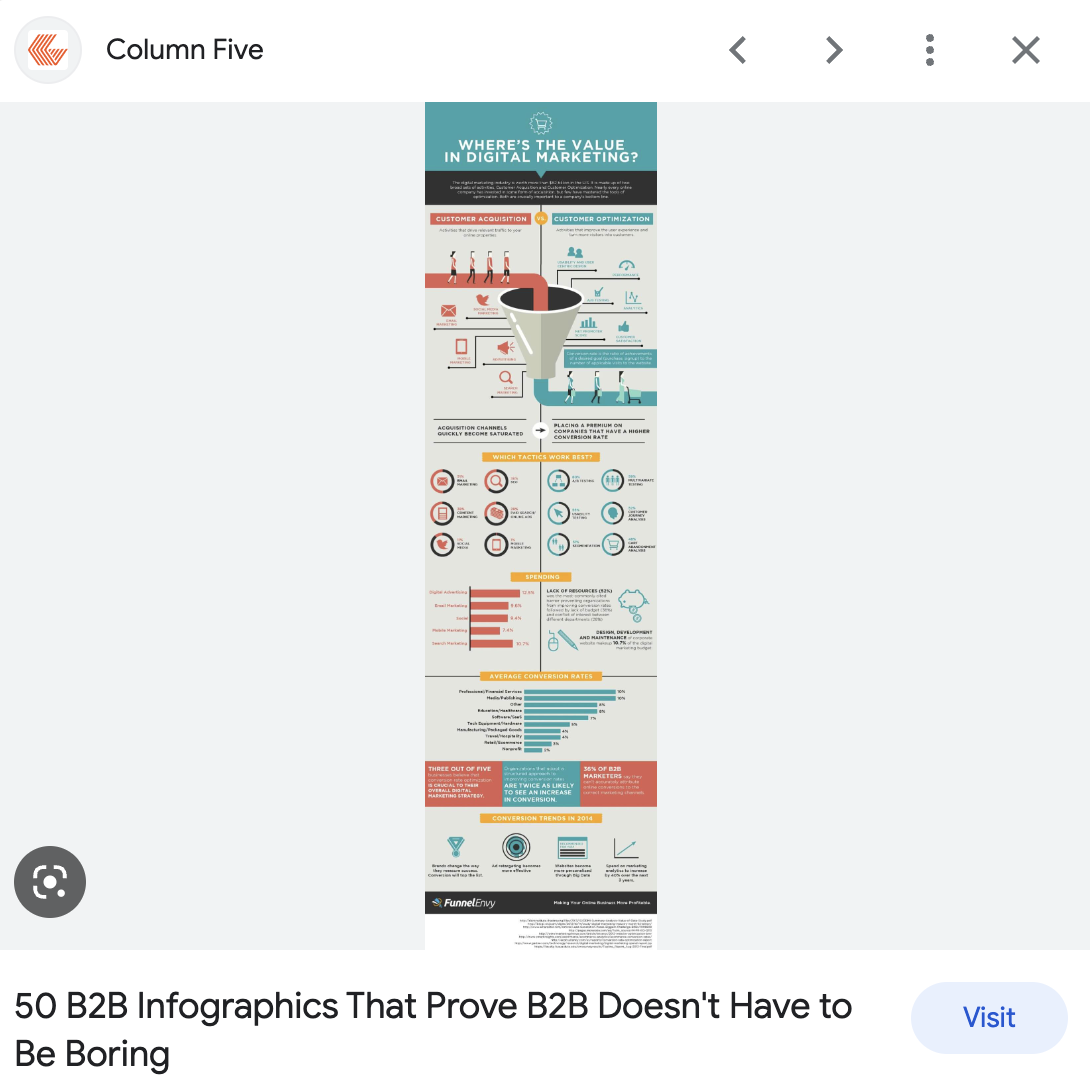
Some of the factors that Google will take into account once users are navigated to your site from Google Images:
Time on page
Bounce rate
Number of pages viewed
Google also cross references Google Image queries with Google search results. For instance, I searched for "Best B2B infographics" on both Google Images and Google search and analyzed the results:
Here are the results of my Google Image search:
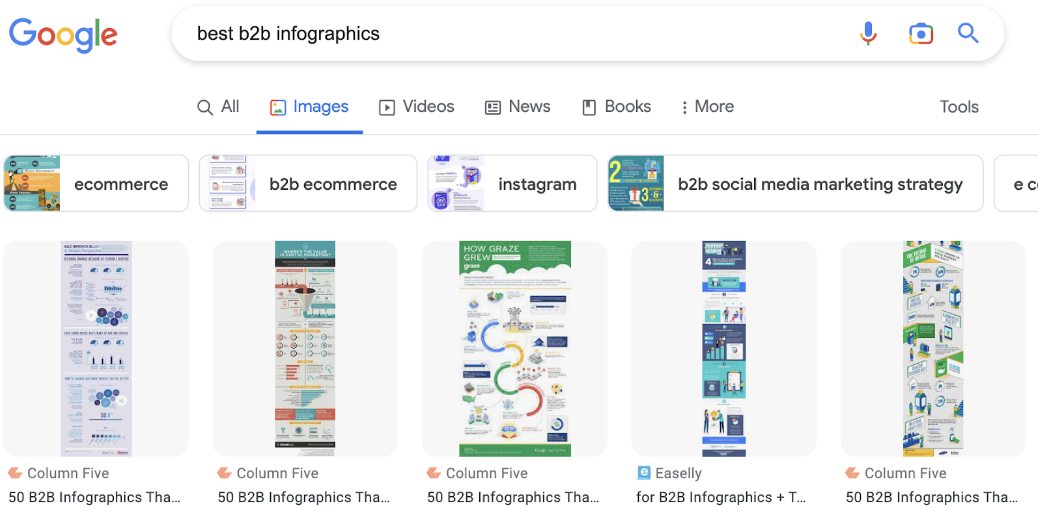
Here are the results of my Google search:
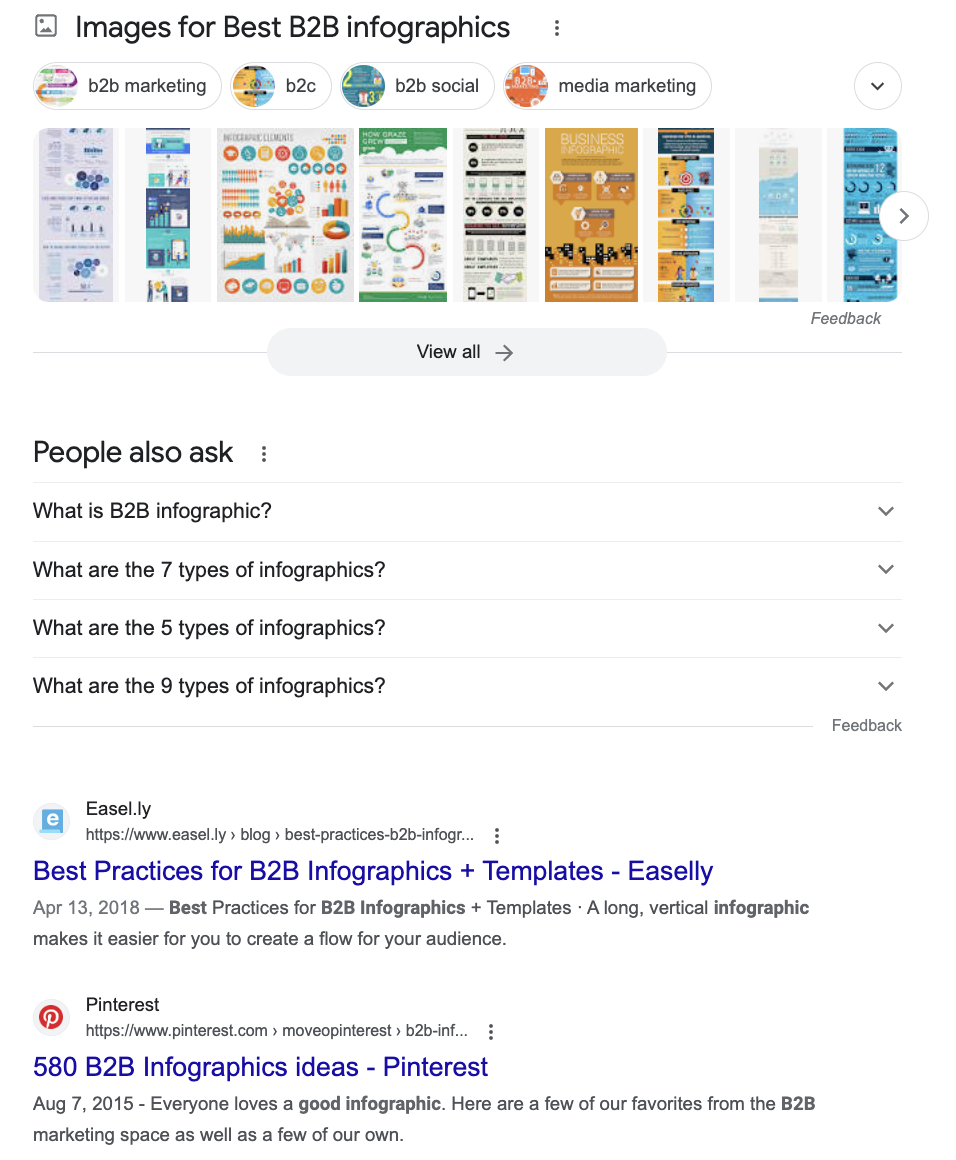
Do you see how the top results in Google Images are also displayed in the Google search results? Additionally, do you see how images rank higher than Pinterest?
One more observation, did you notice how one site (Column Five) dominates competitors in both Google search and Google Images? This isn't a coincidence. It was all planned, and guess what? You can execute the same strategy.
How to optimize image alt text for B2B companies
B2B businesses can enhance their image optimization efforts by using more effective descriptive alt text for their images. While using descriptive alt text is a good start, it can be further improved for better results.
Here is a step-by-step process of how to optimize images for SEO to outrank your competitors:
1.) Identify URLS containing images that do not have alt text using a site crawl tool like Screaming Frog.
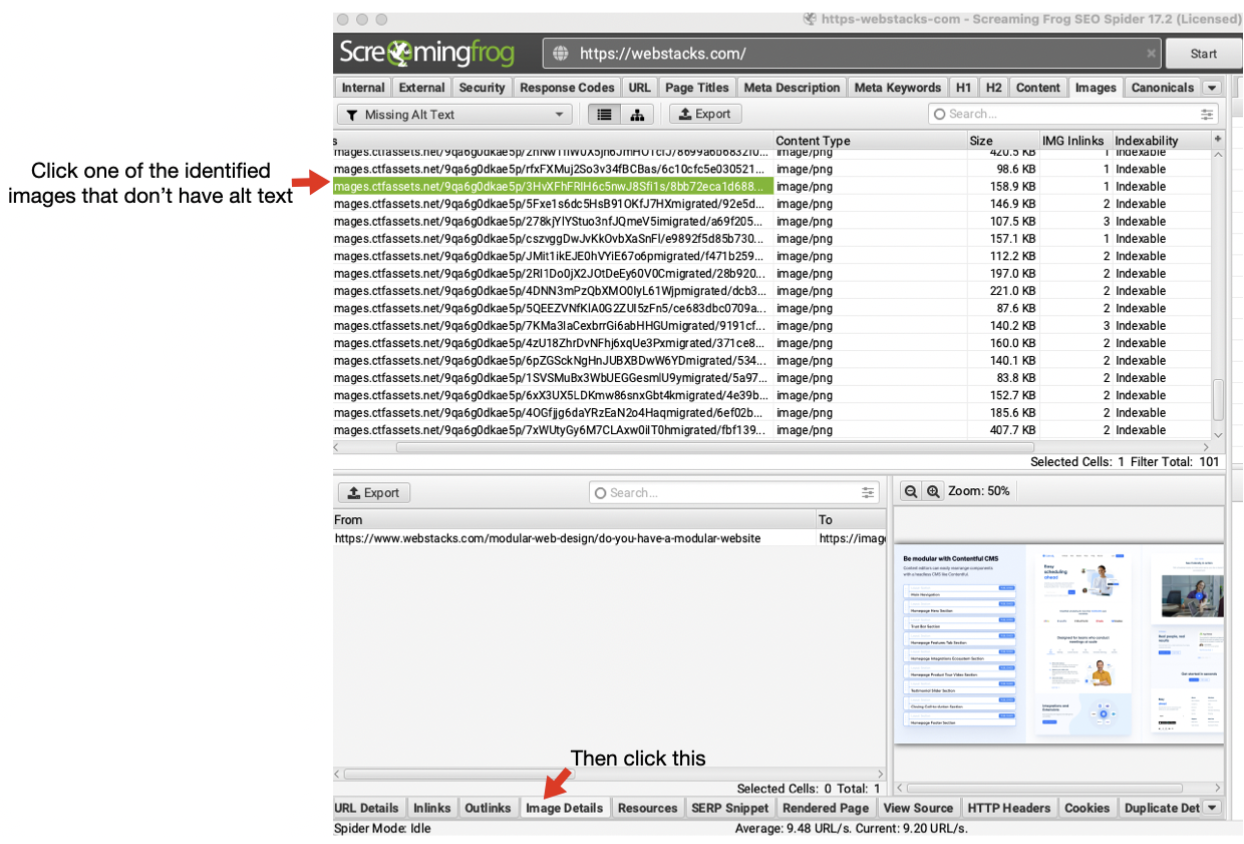
Note: If you utilize a CDN (content delivery network) to find the specific URL path that has missing alt text in Screaming Frog, click any CDN image link, then use the image details tab as depicted above.
2.) Find keywords in Google Search Console you are already ranking for that are specific to the identified URLS that contain missing image alt-text.
Here are keywords that are associated with the URL I identified that has missing alt text:
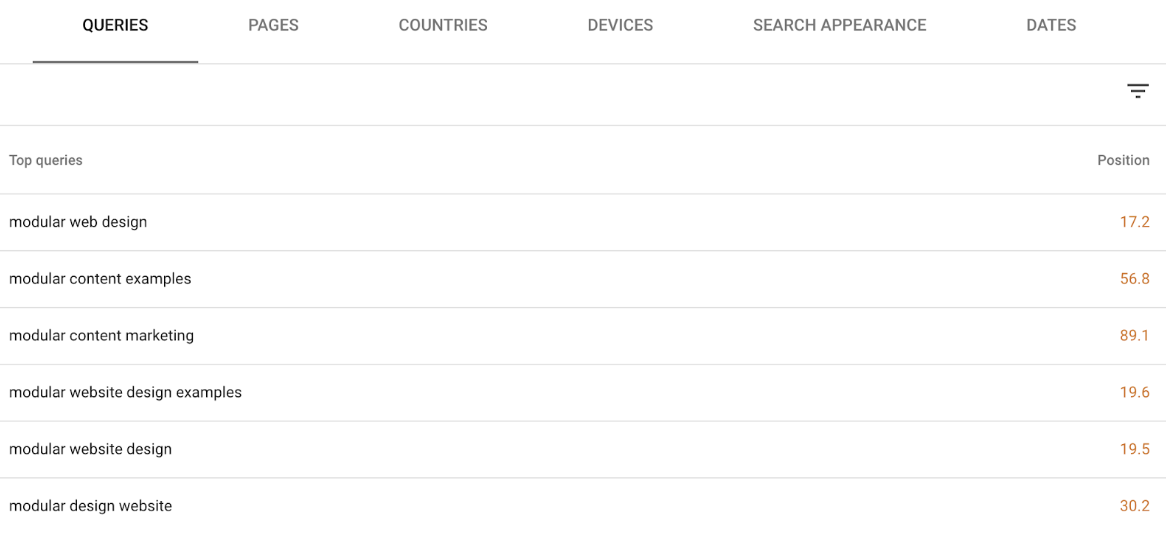
3.) Include your ranking keywords in your alt text to improve your chances of appearing in Google search and Google Images for keywords that have a proven track record of success in the past.
Note: Only insert keywords that are descriptive of images. The words must match what is depicted in the image. If you can't find keywords accurately representing the image, move on to step four.
4.) Use Ahrefs to find correlated keywords to the ranking keywords you identified in Google Search Console. Ensure each keyword has some search volume, then add the keywords to the rest of your images on the page where you have missing alt text.
5.) Use an image compressor like https://tinypng.com/ to reduce your page load time by reducing the file size.
Simple, right? Now sit back and watch your optimized images outrank your competitors.
2.) Schema Implementation
Schema is a B2B business owner's best friend. It is a powerful HTML attribute to deploy to outrank competitors in search results.
For example, once Schema is implemented correctly, you can appear in search results that look like this:

In the image optimization example we just went over you saw Schema results listed under images in Google search results.
Each Schema entry belongs to a website, which creates more visibility in search results that can outrank your competitors.
The featured snippet can also increase your CTR (click-through rate), thus potentially increasing your conversion rate.
How to implement Schema
We strongly advise consulting with an engineer to implement and quality assure Schema code on your site.
If you need assistance with implementing Schema code and want to discover all the markup types that can be deployed for your B2B business, give us a call.
To effectively implement Schema, it is recommended to adhere to a five step process.
Identify the content on your website that could benefit from schema markup.
Choose the appropriate schema markup for the content. Navigate to schema.org to find the specific markup type for your content.
Consult with an engineer to add schema markup to your HTML pages.
Note: The more Schema markup types you have implemented, the better your chances of appearing in featured search results that can outrank your competitors for specific search queries.
4. Test your schema markup via Google's Structured Data Testing Tool to make sure your schema markup is working correctly.
5. Monitor your search results via Google search console.
Remember that schema markup is just one part of optimizing your website for search engines. You should also focus on creating high-quality content, optimizing your website's performance, and building high-quality backlinks to improve your search engine rankings.
3.) Create Skyscraper Content Clusters
Are you familiar with the Skyscraper method? It's a strategy that is rooted in outperforming and rising above competitors. The goal is to produce superior content compared to the top-ranking page for your target topic.
What should skyscraper content include?
Skyscraper content should be long form. To create skyscraper content, you should follow these steps:
Identify a trending topic in your industry.
Provide granular information from credible sources.
Identify information gaps in the content you want to outrank.
Use more examples and incorporate different media types.
Here are different media types you should consider adding to your page:
Images
Videos
Infographic
Interactive Features
The goal of skyscraper content is to provide a resource that is so comprehensive and valuable that it naturally attracts links, shares, and engagement. But writing skyscraper content needs to be combined with content clusters.
What are Content clusters?
Content clusters organize your website's content to form a pillar structure around a core topic. A content cluster contains a main "pillar" page that covers a broad topic with a lot of granularity, and multiple "cluster" pages cover subtopics related to the main pillar page.
Cluster pages are linked to the pillar page and each other, creating a network of closely related and highly relevant content to the core topic.
For instance, take a look at the following example.
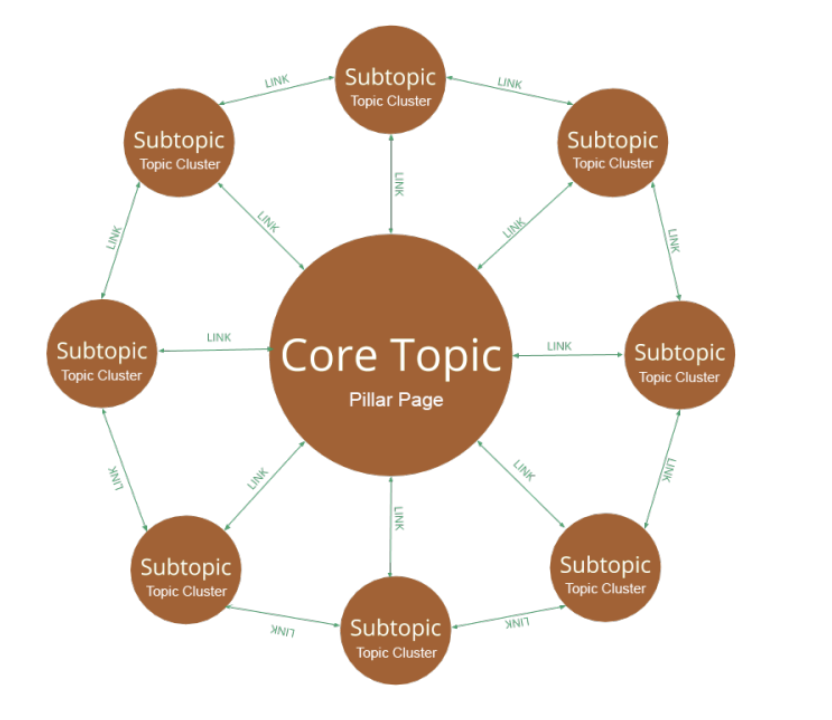
Your skyscraper content should be the main pillar. Therefore, your clusters support the main target keyword you have written about in your skyscraper content.
By creating content clusters, you will:
Improve search engine visibility.
Create a better user experience.
Increase authority and thought leadership.
In conclusion
By integrating the three strategies (image optimization, Schema, and skyscraper content clusters), you can significantly enhance your chances of surpassing your competitors. However, it's crucial to note that executing these tactics requires substantial effort.
If bandwidth is a concern, don't worry - we're here to assist. Our team of SEO specialists and CRO experts can aid you in outranking your competitors and optimizing your pages to convert traffic into sales. Contact us today to get started!
Join our growing community of B2B experts and learn the ins and outs of building a world-class website.
1.) Strategically Optimize alt text
How does image optimization improve SEO ranking?
How to optimize image alt text for B2B companies
2.) Schema Implementation
How to implement Schema
3.) Create Skyscraper Content Clusters
What should skyscraper content include?
What are Content clusters?